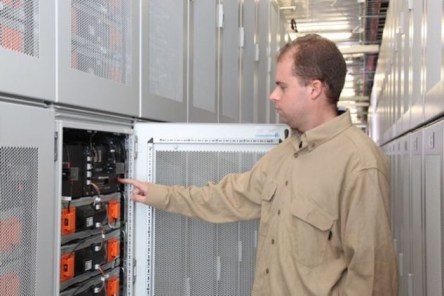Late last month, Southern California Edison switched on its newest substations, an 80MWh lithium-ion battery storage facility that will manage peak demand and improve grid reliability. Just off Interstate 15, nestled in the heart of California’s Riverside County, one of the world’s biggest energy storage projects recently roared to life. Part of a collaboration between Tesla and Southern California Edison (SCE), the installation at the Mira Loma substation will be used to manage peak energy demand and stabilize the grid. “Upon completion, this system will be the largest lithium-ion battery storage project in the world,” declares a Tesla blog post announcing the project. “When fully charged, this system will hold enough energy to power more than 2,500 households for a day or charge 1,000 Tesla vehicles.” Managing Peak Energy The Mira Loma project is one of the first to use Tesla’s new Powerpack 2 for utility-scale energy storage. With an 80 MWh capacity, the 400 Powerpacks will allow SCE to manage energy use during peak hours. The Powerpacks will be charged with electricity generated during off-peak hours and then supplement demand during periods of peak demand. This process will not only save energy; it will allow SCE to maintain grid reliability, deliver better power quality to customers and reduce dependence on fossil fuels. “The system will charge using electricity from the grid during off-peak hours and then deliver electricity during peak hours to help maintain the reliable operation of Southern California Edison’s electrical infrastructure which feeds more than 15 million residents,” explains the Tesla statement. “By doing so, the Tesla Powerpack system will reduce the need for electricity generated by natural gas and further the advancement of a resilient and modern grid.” Future Expansion Larger utility-scale energy storage projects are already in the works...

